Thursday☕️

Trending:
- Yesterday, May 28, 2025, Elon Musk announced the end of his role as a Special Government Employee, where he worked to reduce federal spending. He thanked President Donald Trump for the opportunity, highlighting his involvement with the Department of Government Efficiency (DOGE), an initiative launched via Executive Order on January 20, 2025, to cut government costs and modernize technology. His tenure concluded as required by U.S. law, which limits special government employees to 130 days per year.
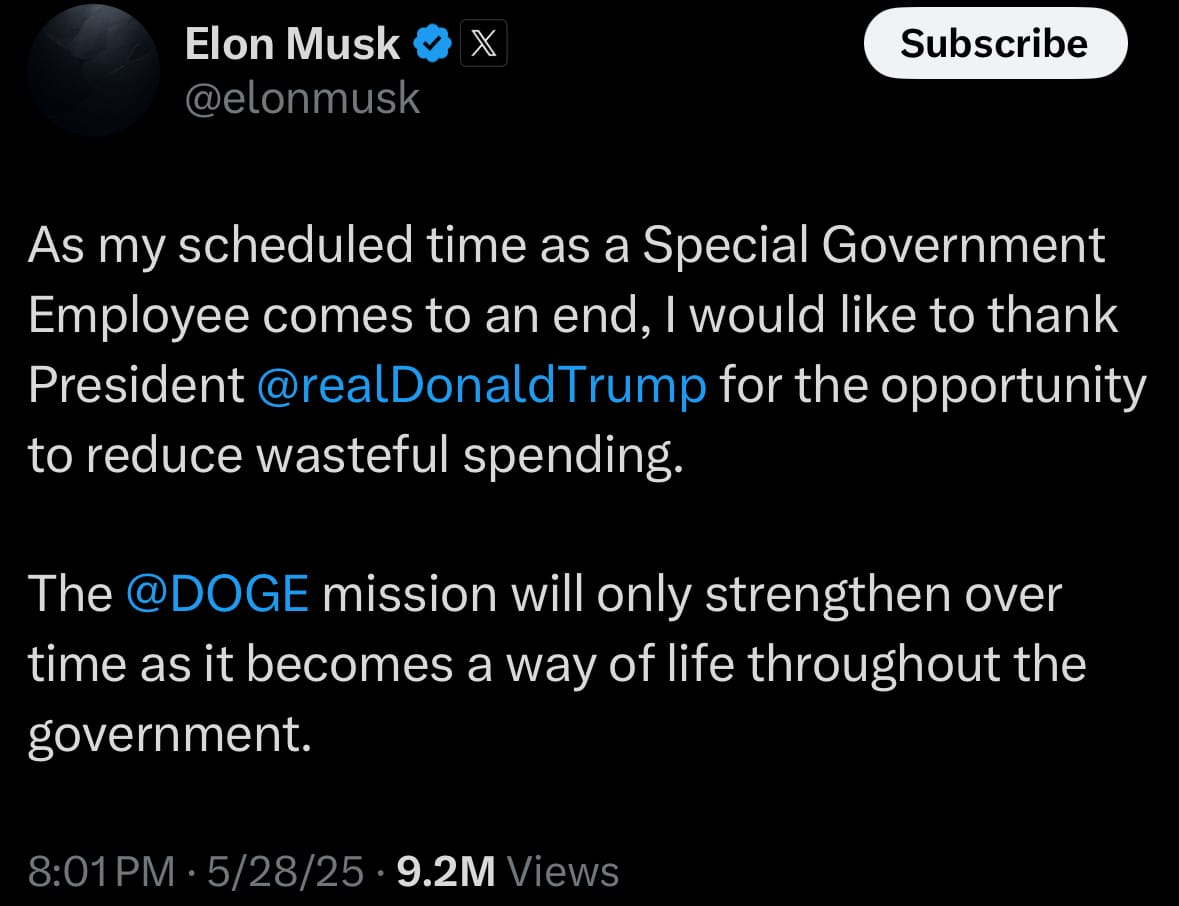
- As of May 28, 2025, at 11:05 PM EDT, DOGE has achieved estimated savings between $150 billion and $180 billion. Key actions include canceling 120 contracts valued at $3.1 billion, saving $908 million, and 262 contracts worth $1.2 billion, saving $230 million, according to doge.gov.
Economics & Markets:
- Yesterday’s U.S. stock market:
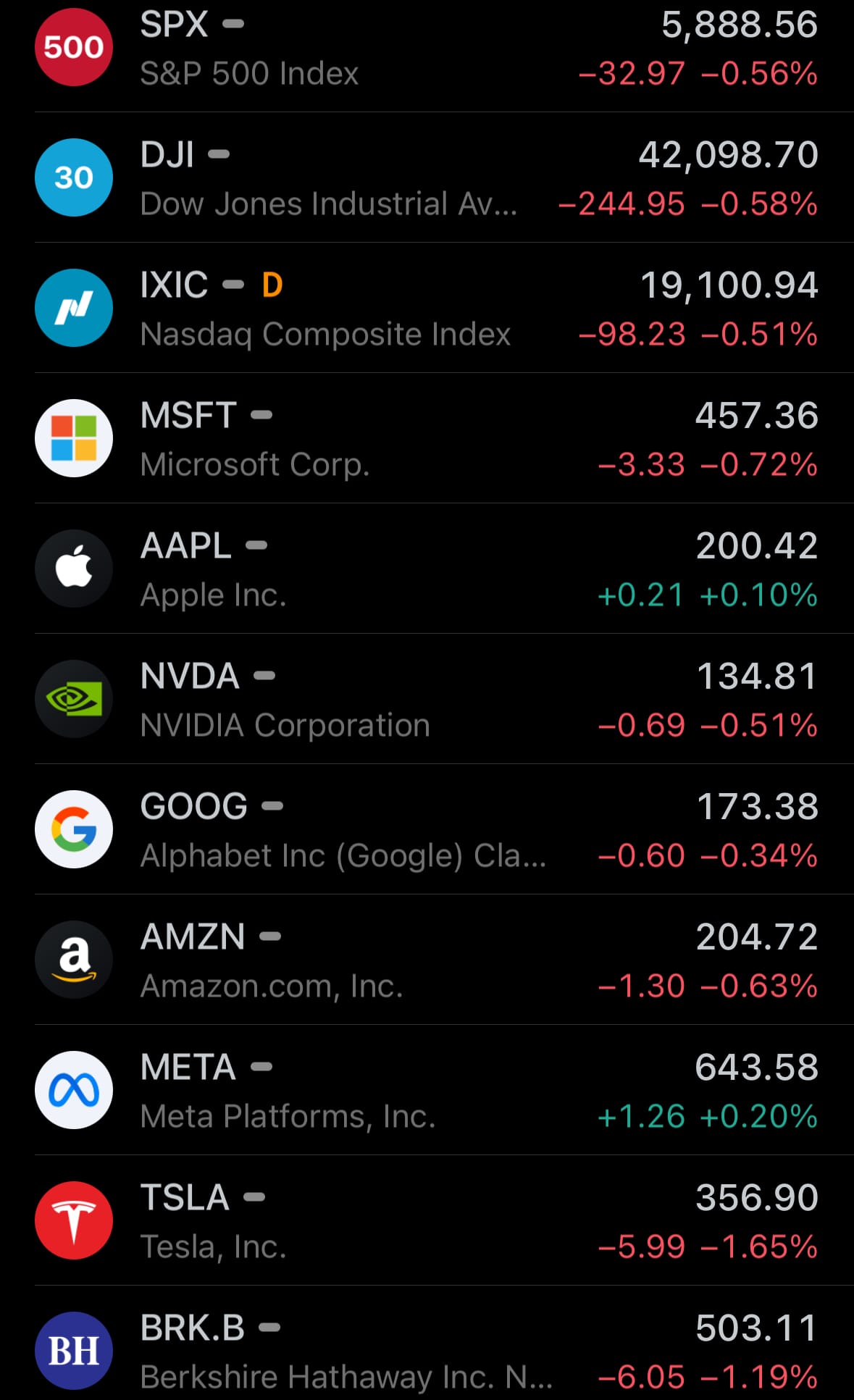
- Yesterday’s commodity market:

- Yesterday’s crypto market:
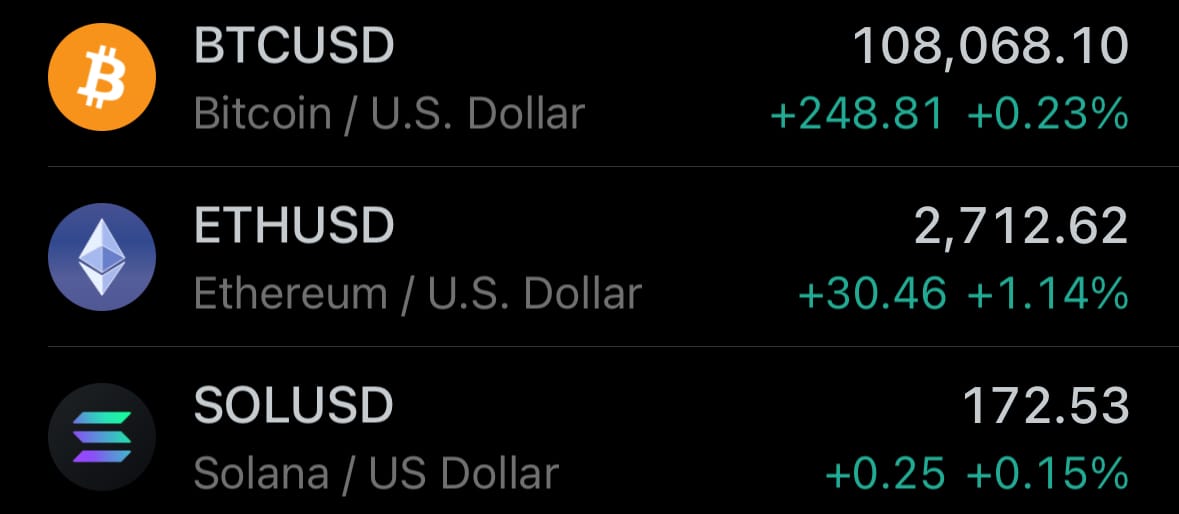
Geopolitics & Military Activity:
- Yesterday, May 28, 2025, Israeli forces carried out airstrikes on Sanaa International Airport in Yemen as part of "Operation Golden Ornament." The Israel Defense Forces (IDF) stated that the targets were Houthi assets, including aircraft allegedly used to transport individuals planning attacks against Israel. The strikes damaged runways and destroyed aircraft, with Israeli Defense Minister Israel Katz confirming that the last Houthi-controlled plane at the airport was eliminated, aiming to enforce an aerial and naval blockade on Yemen. Visuals from the scene showed heavy black smoke rising from the airport, indicating significant destruction.

- Yemeni sources reported that the attack destroyed a Yemenia Airlines plane, which they claimed was the last operational aircraft of the airline at the airport, along with the runways. Houthi-affiliated media described the strike as an act of aggression, while noting that three Yemenia planes had been destroyed in recent Israeli operations. The airport had resumed limited operations on May 13 following earlier Israeli strikes on May 7, with Yemeni engineers attempting repairs. The strikes are part of ongoing tensions, as the Houthis have launched ballistic missile attacks on Israel in solidarity with Palestinians during the Gaza conflict, prompting Israeli retaliatory actions that have repeatedly impacted Yemen’s civilian infrastructure.

Environment & Weather:
- Yesterday, May 28, 2025, a collapse occurred at the Birch Glacier above Blatten, a village in the Lötschental Valley, Valais, Switzerland, at around 3:24 p.m. local time. Around 3.5 million cubic meters of ice, rock, and snow, weighing about 9 million tons, broke off, triggering a large avalanche. This followed weeks of instability, including prior rockfalls on the nearby Kleiner Nesthorn that had added pressure to the glacier. The debris flow breached an avalanche protection dam, reached within 400 meters of the village, and covered roughly 90% of Blatten—about 130 houses—with ice, mud, and rock, while also damming the Lonza River and destroying nearby forests.

- The village of Blatten, with a population of about 300, had been evacuated days earlier due to concerns about the glacier’s stability, a precaution that likely minimized casualties. However, one person remains missing following the event, and a second collapse occurred at 4:00 a.m. on May 29, raising fears of further slides. Authorities continue to monitor the area for additional risks. The incident highlights the increasing instability of glaciers in the Swiss Alps, a trend often attributed to rising temperatures and accelerated glacial retreat due to climate change.
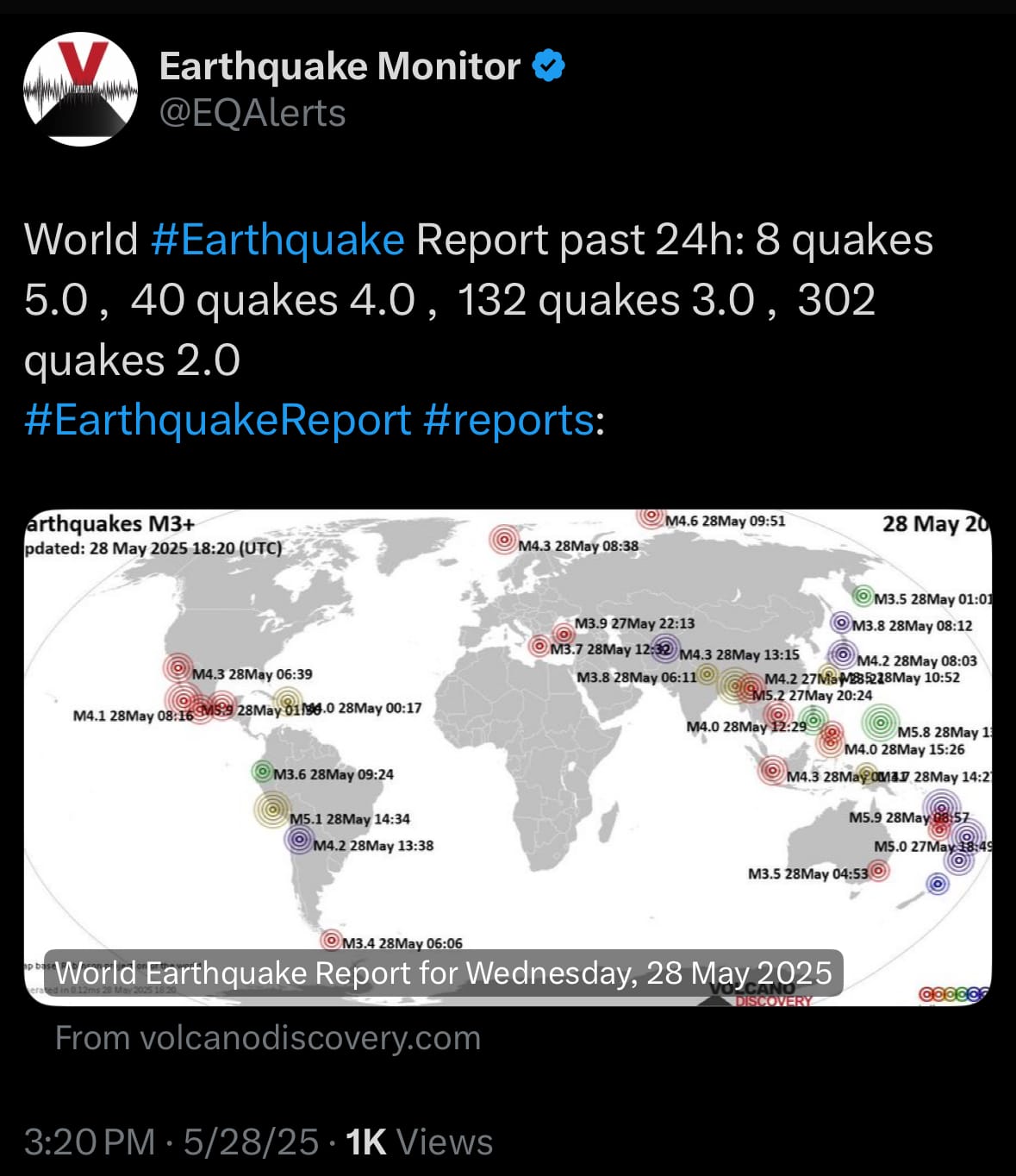
Space:
- Yesterday, May 28, 2025, SpaceX launched the Starlink Group 10-32 mission from Launch Complex 39A at NASA’s Kennedy Space Center in Florida at 9:30 a.m. ET (13:30 UTC). The Falcon 9 rocket deployed 27 Starlink satellites into low Earth orbit to expand SpaceX’s satellite internet constellation. The launch proceeded despite variable weather, and the reusable first stage booster landed successfully on the droneship Just Read The Instructions, marking SpaceX’s 453rd successful booster landing.
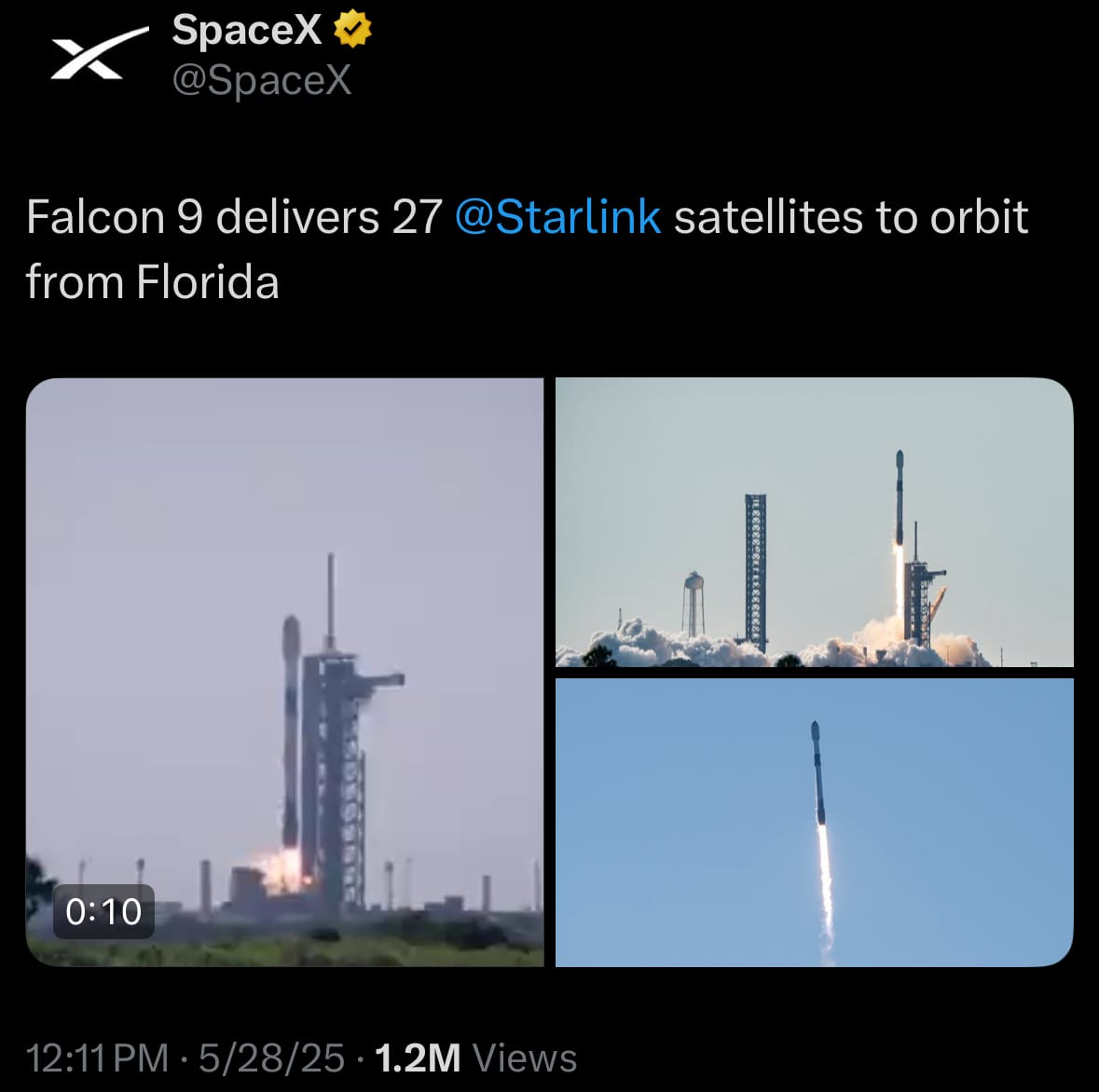
- The satellites were deployed approximately one hour after launch, with confirmation at 14:34 UTC. This launch is part of a continued series of Starlink missions, with additional launches scheduled in the near term, reflecting SpaceX’s ongoing efforts to expand internet coverage worldwide.
- Yesterday, May 28, 2025, China launched the Tianwen-2 mission from Launch Complex 2 at the Xichang Satellite Launch Center in Sichuan, using a Long March 3B rocket at 5:31 p.m. UTC (1:31 a.m. May 29 local time). The spacecraft, aimed at asteroid sample return and comet exploration, was successfully deployed into a transfer orbit toward the near-Earth asteroid Kamoʻoalewa (2016HO3) approximately 18 minutes after launch. With a launch mass of 2.1 tons, Tianwen-2 is designed to collect samples from Kamoʻoalewa by 2027 and later study the main-belt comet 311P/PANSTARRS by 2035, marking China’s first mission to retrieve extraterrestrial material beyond the Moon.
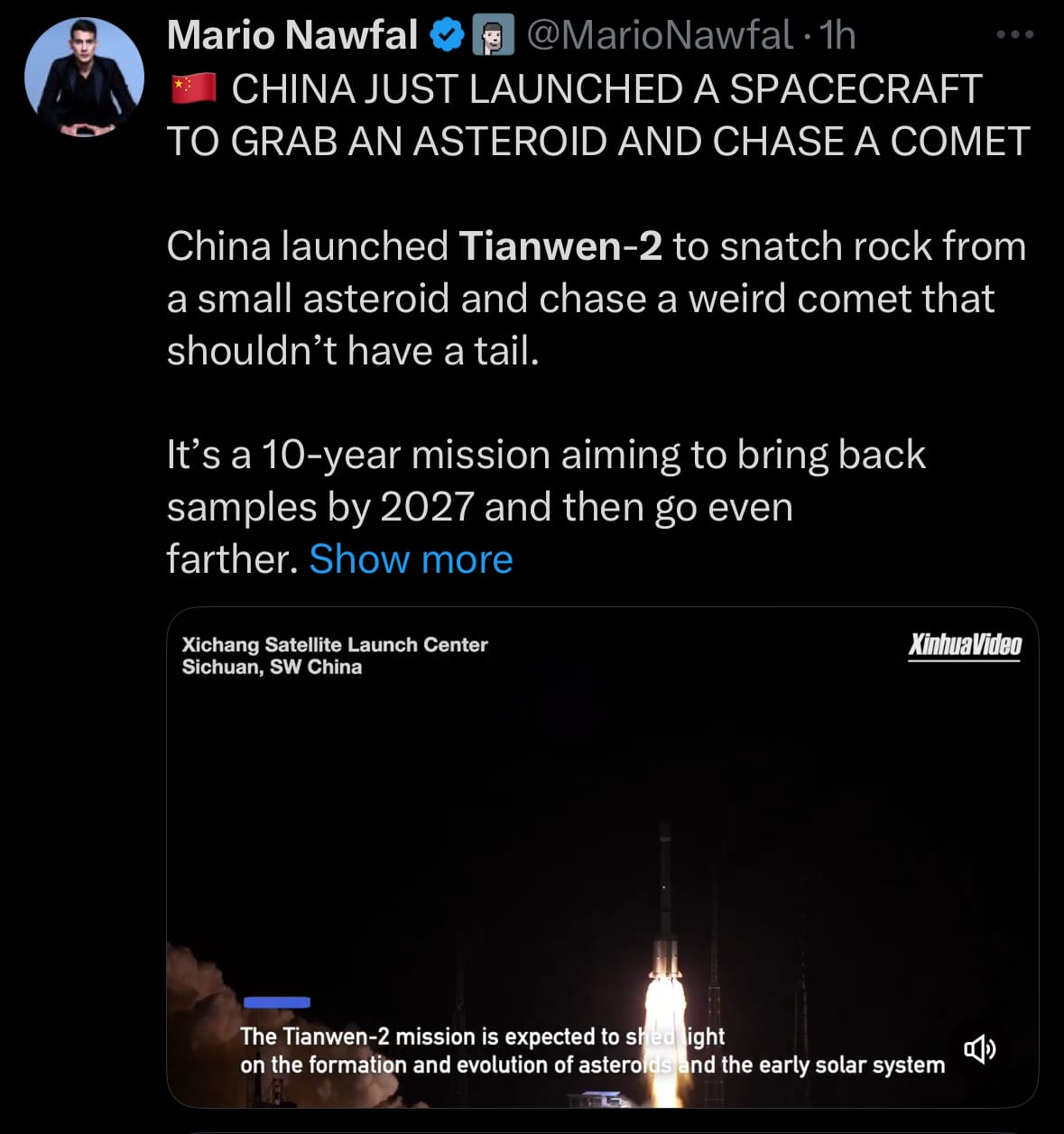
- The Tianwen-2 mission is part of China’s ongoing efforts to advance its deep space exploration program, following the Tianwen-1 Mars mission. The spacecraft will conduct a multi-year mission, first rendezvousing with Kamoʻoalewa, a near-Earth asteroid, to collect and return samples, then proceeding to study comet 311P/PANSTARRS. Pre-launch preparations included rigorous testing, assembly, and fueling. The launch was covered through live broadcasts, and updates were shared on platforms like X, noting the mission’s significance in expanding China’s planetary science capabilities.
Statistic:
- Largest public alcohol companies by market capitalization:
- 🇨🇳 Kweichow Moutai: $269.28B
- 🇧🇪 Anheuser-Busch Inbev: $136.83B
- 🇨🇳 Wuliangye Yibin: $68.43B
- 🇬🇧 Diageo: $60.26B
- 🇳🇱 Heineken: $48.97B
- 🇧🇷 Ambev: $39.46B
- 🇺🇸 Constellation Brands: $33.10B
- 🇫🇷 Pernod Ricard: $26.63B
- 🇨🇳 Luzhou Laojiao: $24.32B
- 🇯🇵 Asahi Group: $19.68B
- 🇩🇰 Carlsberg: $18.91B
- 🇺🇸 Brown Forman: $16.29B
- 🇭🇰 Budweiser APAC: $13.94B
- 🇨🇳 YANGHE: $13.73B
- 🇮🇳 United Spirits: $12.75B
- 🇨🇳 Tsingtao: $12.08B
- 🇯🇵 Kirin Holdings: $11.50B
- 🇺🇸 Molson Coors: $10.95B
- 🇭🇰 China Resources Beer: $10.65B
- 🇯🇵 Suntory: $9.83B
- 🇹🇭 Thai Beverage: $9.13B
- 🇮🇹 Davide Campari-Milano: $7.69B
- 🇮🇳 United Breweries: $6.38B
- 🇦🇺 Endeavour Group: $4.65B
- 🇲🇽 Becle: $4.36B
History:
- The concept of presidential pardons in the United States traces its roots to English common law, where monarchs held the prerogative to grant mercy, often for political or personal reasons. This power was adapted in the U.S. Constitution, with Article II, Section 2, Clause 1 granting the president the authority to issue pardons for federal offenses, except in cases of impeachment. Early presidents like George Washington used pardons sparingly, often to quell rebellions, such as the Whiskey Rebellion in 1794, or to correct perceived judicial overreach. Throughout the 19th century, pardons were typically issued on a case-by-case basis, often for minor offenses or to restore civil rights, with notable examples including Andrew Johnson’s post-Civil War pardons of Confederate soldiers to promote national reconciliation. The process was informal, with presidents personally reviewing petitions, reflecting a limited federal justice system and a narrower scope of executive power.
- In the 20th and 21st centuries, the use of presidential pardons evolved significantly, shaped by an expanding federal legal system and shifting political norms. The creation of the Department of Justice in 1870 and the Office of the Pardon Attorney in 1891 formalized the pardon process, introducing structured guidelines and reviews, though presidents retained ultimate discretion. High-profile and controversial pardons, such as Gerald Ford’s pardon of Richard Nixon in 1974 or Bill Clinton’s pardon of Marc Rich in 2001, highlighted the power’s potential for political backlash and accusations of abuse. Recent decades have seen pardons used for both individual clemency and broader policy goals, like Barack Obama’s commutations for nonviolent drug offenders or Donald Trump’s pardons of political allies. Today, the pardon power remains a unique executive tool, balancing mercy with the risk of undermining judicial accountability, often sparking debates over fairness and transparency.
Image of the day:

Thanks for reading!
Earth is complicated, we make it simple.
Click image to view the Earth Intelligence System:



Support/Suggestions Email:
earthintelligence@earthintel.news




